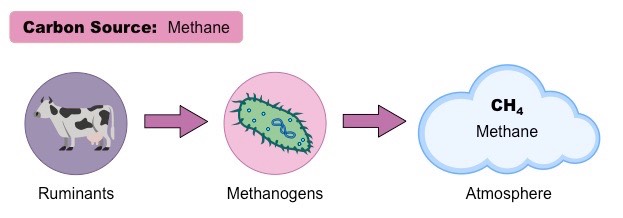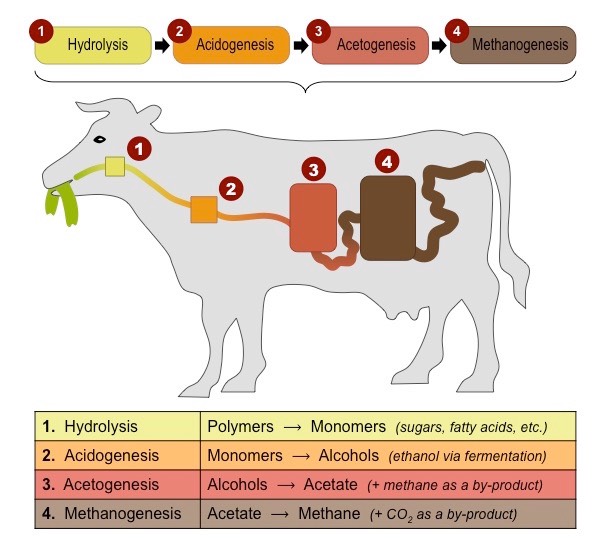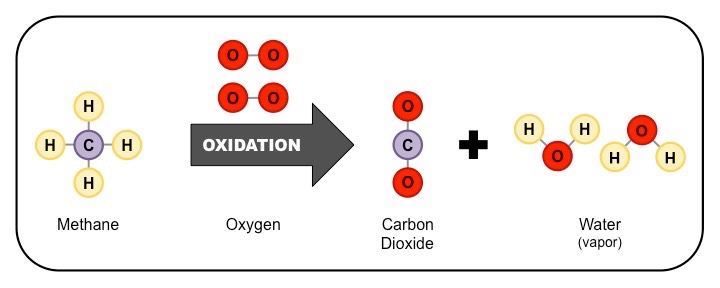![]()
Understanding:
• Methane is produced from organic matter in anaerobic conditions by methanogenic archaeans and some
diffuses into the atmosphere or accumulates in the ground

Methanogens are archaean microorganisms that produce methane (CH4) as a metabolic by-product in anaerobic conditions
Anaerobic conditions where methanogens may be found include:
- Wetlands (e.g. swamps and marshes)
- Marine sediments (e.g. in the mud of lake beds)
- Digestive tract of ruminant animals (e.g. cows, sheep, goats)
Methanogens produce methane from the by-products of anaerobic digestion, principally acetic acid and carbon dioxide:
- Acetic acid → Methane and Carbon Dioxide (CH3COO– + H+ → CH4 + CO2)
- Carbon Dioxide and Hydrogen → Methane and Water (CO2 + 4 H2 → CH4 + 2 H2O)
Methane may either accumulate under the ground or diffuse into the atmosphere
- When organic matter is buried in anoxic conditions (e.g. sea beds), deposits of methane (natural gas) may form underground
- Rising global numbers of domesticated cattle may be increasing the levels of methane being released into the atmosphere
Stages of Methane Production in a Ruminant

![]()
Understanding:
• Methane is oxidised to carbon dioxide and water in the atmosphere
When methane is released into the atmosphere as a result of anaerobic reactions, it only persists for ~12 years
Methane will be naturally oxidised to form carbon dioxide and water (CH4 + 2 O2 → CO2 + 2 H2O)
- This is why methane levels in the atmosphere are not very large, even though significant quantities are being produced
Oxidation of Atmospheric Methane

